| Author | Message | ||
| Jim Wilkerson (Wagwar)
Registered Member Username: Wagwar Post Number: 91 Registered: 12-2009 Posted From: 99.109.187.242 Rating: N/A |
Over the last weekend, we did 3.5 days of dry-camping w/o hookups. The temps here were in the upper 90's to 100 with high humidity. A couple of times I tried to cool the bus (mc9) down by firing up the genset (PowerTech 6.6 diesel rated at 55amp - so reasonable to expect minimum 20amp on each 120vac leg?) and running the two Carrier Air V rooftop a/c units. We were sitting still and even running both a/c units did not cool down the bus (it was 100 that day!). I noticed that if one a/c unit was blowing cold air, the other would just be blowing room temp air. Then the other would start putting out cold and the other would start blowing room temp. I had them both set on Max cool. I was not using any power for anything else except a/c units and inverter was off. Should I conclude that my 6kw genset just does not produce enough current to power both a/c units? Is it reasonable to expect the gen to power both units adequately? Do gensets need to be 'tuned' up? Am I going to have to move up to an 8kw gen? Thanks in advance. | ||
| Bill 340 (Bill_340)
Registered Member Username: Bill_340 Post Number: 113 Registered: 7-2006 Posted From: 75.202.75.136 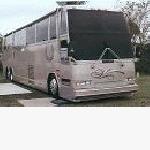 Rating: N/A |
I use a 5.5 diesel generator made by next generation power in jacksonville fl. we run 2 roof airs the house charger elec fridge off of this gen at the same time, now that is the max for this ,set, kits only 24in x24inx24in, noisey a little but happy | ||
| Tim Brandt (Timb)
Registered Member Username: Timb Post Number: 560 Registered: 10-2003 Posted From: 66.165.176.62 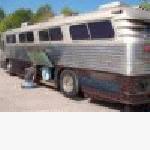 Rating: N/A |
If both AC's are on and running the generator has nothing to do with it. If the AC compressor were to try and start and the gen wasn't putting out enough it would trip the breaker not just run the fan | ||
| Jim Wilkerson (Wagwar)
Registered Member Username: Wagwar Post Number: 92 Registered: 12-2009 Posted From: 99.109.187.242 Rating: N/A |
Thanks Tim, I didn't know that. They aren't throwing breakers, but why do they seem to alternate blowing cold air? Although the air is not real cold... | ||
| Sean Welsh (Sean)
Registered Member Username: Sean Post Number: 1140 Registered: 1-2003 Posted From: 67.142.130.13 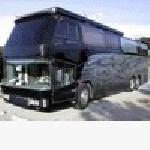 Rating: |
Jim, Your generator is easily capable of running two air conditioners. Are thse units with integral controls, or is there an external thermostat, say mounted on the wall? The reason I ask is that some manufacturers offer a control system that deliberately does just what you described: alternate compressor operation between two units. The purpose of this is to allow two units to be run simultaneously on a single 30-amp shore power supply. In fact, is is unlawful to build and sell an RV with two air conditioners and a 30-amp shore system unless there is some type of energy management to coordinate the air conditioners. Just one possibility. -Sean http://OurOdyssey.BlogSpot.com | ||
| Jim Wilkerson (Wagwar)
Registered Member Username: Wagwar Post Number: 93 Registered: 12-2009 Posted From: 99.109.187.242 Rating: N/A |
Hi Sean and Thanks! BTW, I bought those relays and I'm trying to run down the A/C blower circuit before I install. Anyway, these are Carrier Air V units and have no interconnections or thermostat. Controls are separate. As I mentioned on that other thread they are on separate sides of the house panel. I can run both of them on a 30 Amp shore service if one is running off the inverter. 30 Amp shore seems to be enough to run one A/C and provide enough current for the inverter to keep the batts charged - thus I'm able to run the second A/C off of it. However, running them both on the genset - they seem to be alternating producing cold air. It was very hot, but I expected more from these units. | ||
| Sean Welsh (Sean)
Registered Member Username: Sean Post Number: 1141 Registered: 1-2003 Posted From: 67.142.130.13  Rating: N/A |
Hmm. As Tim said, there is no reason why even an insufficient generator should cause this behavior. But I am gathering from what you wrote, though, that if you connect the bus to a 50-amp shore service, both units run fine, is that correct? That said, let's look at a few things to see if we can track this down. With the generator running and stable, but both A/C units off, measure the voltage on both legs. Then run each A/C individually and again measure the voltage on both legs. And, finally, measure both legs again with both units running. Report the results here. Ideally, you would measure the voltage right at the A/C units themselves. If that's not practical, measure at the panel. -Sean http://OurOdyssey.BlogSpot.com (Message edited by Sean on August 16, 2010) | ||
| Jim Wilkerson (Wagwar)
Registered Member Username: Wagwar Post Number: 94 Registered: 12-2009 Posted From: 99.109.187.242 Rating: N/A |
At this point, I have never connected to a 50 amp shore service. While the bus has a 50 Amp female receptacle and two hot legs are wired through to the auto trans switch and house panels, the shore cord I have is 30A only (30 amp male one end and 50 amp male on the other). I still need to purchase a 50 amp cord and then find a 50 amp service to try. However, I will run these tests are report back here the results. Thanks again. | ||
| John MC9 (John_mc9)
Registered Member Username: John_mc9 Post Number: 1176 Registered: 7-2006 Posted From: 74.162.93.86 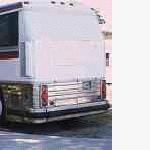 Rating: |
Re: "I noticed that if one a/c unit was blowing cold air, the other would just be blowing room temp air. Then the other would start putting out cold and the other would start blowing room temp. I had them both set on Max cool. " Could be as simple as one AC unit cooling down the other's thermostat enough to stop it from spitting out cold air? Did you try closing off a door between the front and rear, and keeping them isolated, just to see if they would cool the areas separately? Just sayin'.... | ||
| Sean Welsh (Sean)
Registered Member Username: Sean Post Number: 1142 Registered: 1-2003 Posted From: 67.142.130.13  Rating: |
"Could be as simple as one AC unit cooling down the other's thermostat enough to stop it from spitting out cold air? " This is the obvious explanation and was really the reason behind my question about whether it was working fine on a 50-amp circuit. I was trying to establish for certain whether this problem occurs only on the generator, or would occur even on other sources. Without that data point it's hard to implicate the genny. Also: "... 30 amp male one end and 50 amp male on the other ..." -- I'm hoping I misread that, and that you mean there is a male plug on one end, and a female receptacle on the other. It is dangerous (possibly deadly) and illegal to have a male plug on both ends of a cord, or to use a female receptacle as a power inlet. If you can't use a proper male bulkhead connector and female cord end at the bus end of the assembly for whatever reason (cost, mounting issues, etc.) then just hard-wire the cord end to a junction box. The convenience of a detachable cord is not worth your life or the life of a loved one. -Sean http://OurOdyssey.BlogSpot.com | ||
| George M. Todd (George_todd)
Registered Member Username: George_todd Post Number: 1093 Registered: 8-2006 Posted From: 99.56.240.204 Rating: N/A |
Jim, Sean has my vote on both of his posts, there's nothing more to add to either, other than to be a little humorous, and ask if you know the difference between male and female? (plugs!) In college electronics classes, a cord with stripped wires on one end, and a male plug on the other end, was called a suicide cord, for obvious reasons! Regarding the A/Cs running one on 30A shore, and one on the inverter, with enough shore left to charge the batteries; Then there would be enough power to run both on the shore, because there is no electrical free lunch. Either that or the inverter will shut down soon for low batts? Enough of that, lets try one more thought on the two A/Cs and the gen. If you're absolutely sure there is no interlock between them, and from what I read: "no thermostat" which I take to mean no wall mounted remote thermostat, just a temp knob on the unit itself? That would rule out one unit cooling the other, and I don't go with that, as you are complaining about being too hot all the time. Compressors have an internal overload protector, which will trip if the compressor motor gets too hot. Its automatic reset, after a few minutes of cooldown following a trip. So, if the voltage is too low, or the frequency is low, both of which WILL happen with the gen governor set too slow, or a dirty fuel filter not allowing the gen to make enough power to run both compressors, one may trip. That would raise the voltage/frequency on the other enough to allow it to run for several minutes longer, and maybe the changeover between is just coincidental? I dunno, but I sure wanna hear what you find! G | ||
| Sean Welsh (Sean)
Registered Member Username: Sean Post Number: 1143 Registered: 1-2003 Posted From: 67.142.130.13  Rating: N/A |
"Regarding the A/Cs running one on 30A shore, and one on the inverter, with enough shore left to charge the batteries; Then there would be enough power to run both on the shore, because there is no electrical free lunch." Actually, George, it makes perfect sense, because of starting load issues. We can run two roof airs on a single 30-amp receptacle courtesy of the fact that we first run them through our inverter, which can "take up the slack" when a compressor starts. Under steady running conditions, the units use a combined total of about 25 amps. If we tried to run two units directly from shore, without the inverter in the picture, the starting current of the second unit would trip the 30-amp shore breaker every time. We can do this because we have a load-supplementing inverter. The poor-man's version of this, though, is to do just what Jim is doing: running the A/C from an inverter, while simultaneously charging the batteries with a charger, allows the inverter to supplement the starting current from the batteries. So long as the charger puts out just a tad more current than the inverter draws while running the A/C, it all foots at the end. -Sean http://OurOdyssey/BlogSpot.com | ||
| FAST FRED (Fast_fred)
Registered Member Username: Fast_fred Post Number: 1282 Registered: 10-2006 Posted From: 99.153.142.249 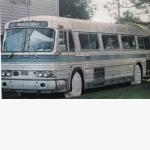 Rating: N/A |
IF this conversion was not created by you I would look for a control box. It is common on many RV setups to cut one compressor when the other goes on. Its called load sharing and will allow 2 AC to operate (one at a time ) on a simple 30A plug. Sounds like what you have. FF | ||
| steve wardwell (Steve_wardwell)
Registered Member Username: Steve_wardwell Post Number: 73 Registered: 2-2010 Posted From: 75.200.122.189 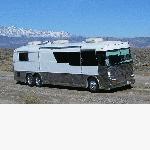 Rating: N/A |
are your AC's set up to have the fan/blower run all the time ? And the compressors only run on a duty cycle? Then you would have both warm and cold air at different times....just sayin......I had this option in the boats....s...... | ||
| Tom Christman (Tchristman)
Registered Member Username: Tchristman Post Number: 240 Registered: 1-2006 Posted From: 66.218.33.156 Rating: N/A |
Two A/C's should cool your bus. I have 3-13,500btu/hr Colemans, but running down the road I only have the front and rear running. In 108 degree weather driving, the bus is in the mid 70's. The key is insulation. I had 2.25" of sprayed insulation installed before my conversion. I just had the same thing done on my truck. With my truck, working in the back, in 90 degree weather, one 10,000btu portable A/C brings the temp down to an easy 80 degrees. Also look at if your A/C's are blowing directly on each other. Sounds like one cools the other then vice versa. Good Luck, TomC | ||
| Jim Wilkerson (Wagwar)
Registered Member Username: Wagwar Post Number: 95 Registered: 12-2009 Posted From: 99.109.187.242 Rating: N/A |
Thanks so much for all of your responses. I'll try to addres each question - if I forget something - I'm sure you'll remind me... Yes, I do know the difference between male and female plugs. No kids, but I think I understand the basics... My mistake regarding the shore cord: The bus has a 50A male pigtail hard wired to a 50A breaker. My shore cord has a 50A female receptacle on one end and a 30A male plug on the other. I don't have the appropriate adapter or straight 50A cord, so I don't currently have a way to plug into a 50A service. I was unable to replicate the same conditions during my testing because the weather has cooled considerably. It was about 85 F last night and of course both A/C units performed perfectly - blowing cold air simultaneously. So, I would have to say the problem is heat related as it was 100+ when I noticed the problem. Here are the results of my voltage testing: A/C unit 1 (Frt) runs off house panel 1 - hot on inverter/gen/shore - leg 1 of genset. A/C unit 2 (rear) runs off house panel 2 - hot on gen/shore only - leg 2 of genset. Running Genset only nothing on: At house panel 1: 115Vac At house panel 2: 115Vac At A/C unit 1 (Front) - 112Vac At A/C unit 2 (rear) - 112Vac Running A/C unit 1 (front) only: At house panel 1: 110Vac At house panel 2: 111Vac At A/C unit 1 (Front) - 109Vac At A/C unit 2 (rear) - 111Vac Running A/C unit 2 (rear) only: At house panel 1: 112Vac At house panel 2: 111Vac At A/C unit 1 (Front) - 110Vac At A/C unit 2 (rear) - 109Vac Running both A/C units: At house panel 1: 109Vac At house panel 2: 109Vac At A/C unit 1 (Front) - 107Vac At A/C unit 2 (rear) - 107Vac | ||
| Sean Welsh (Sean)
Registered Member Username: Sean Post Number: 1144 Registered: 1-2003 Posted From: 67.142.130.25  Rating: N/A |
Jim, All those voltages are "normal." Of course, I'd need to see what the voltages look like when the problem is actually occurring in order to say for sure, but this looks to me like the genny is fine. Since you say the problems are heat-related, again my question would be whether the problem happens without the genny in the picture. Without an alternate 50-amp source, that's going to be hard to test. When the heat index heads up into the high 90s and beyond, all RV air conditioners struggle. There are some things you can check. Make sure both the evaporator and condenser coils are clean. Also, make sure all the weatherstripping around the condenser unit is in place and good, because not only does the condenser rely on it for proper operation, but also the evaporator fan can start to pull hot air into the coach from outside (it normally should draw air only from the inside return plenum). HTH, -Sean http://OurOdyssey.BlogSpot.com | ||
| Jim Wilkerson (Wagwar)
Registered Member Username: Wagwar Post Number: 96 Registered: 12-2009 Posted From: 99.109.187.242 Rating: N/A |
Thanks Sean and all of you that responded. I say it 'seems' heat related, because those A/C units were definitely not working well in that 100+ heat last week, but they worked great last night. If they had been blowing cold air and the bus was still not cooling down last week, then at least I would know it isn't an electrical or HVAC problem. If we get some more extreme heat here, I'll run these tests again. Still I'm glad that the genny seems to be OK. Voltage loss is not drastic and the A/C units do work - albeit when the temps are 'normal'. I will check those items you mentioned. | ||
| John MC9 (John_mc9)
Registered Member Username: John_mc9 Post Number: 1177 Registered: 7-2006 Posted From: 74.162.92.199  Rating: N/A |
Jim - One other thing crossed my feeble mind..... When I used the RV AC units on high on extremely hot days, they had a tendency to ice up (the coils iced up), and it would cease cooling until the ice melted. After I set the thermostats to less than the maximum, they would cycle as normal without icing up. We find the same situation in homes down here on Florida. If the AC unit's thermostat is set to a too low setting, the damned thing will ice up from excessive condensation and cease to cool anything. I don't know if that's what you're looking at, but if it's only occurring on the extra hot days and you've got it set to maximum... well... Maybe try turning the thermostat down a notch or two? (make that "up" a notch or two) . (Message edited by john_mc9 on August 17, 2010) | ||
| Paul Lawry (Dreamscape)
Registered Member Username: Dreamscape Post Number: 676 Registered: 5-2007 Posted From: 64.40.215.251 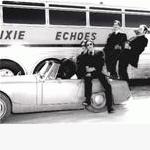 Rating: N/A |
Jim, I agree with the lower setting on your thermostat, as we experienced the same thing on one unit. I can keep our coach very comfortable in 100 degree weather with only running two rooftops on low to medium fan speed. Thermostats set one notch down from high. And they are real old Dometic's with one Coleman. Most of the time when it's hot and the wife's at work I just close our pocket door and keep the front half cool. Our genset can run all three with no problem, but most of the time we're on a pole. Are your A/C circuit breakers on the same side in your panel or opposite sides? We'll see you guys in a few weeks and then we can sit down and talk about how much fun we have owning our beasts! (Message edited by dreamscape on August 17, 2010) | ||
| George M. Todd (George_todd)
Registered Member Username: George_todd Post Number: 1097 Registered: 8-2006 Posted From: 99.56.240.204 Rating: N/A |
Sean, Let's think a little further about what I said about internal overloads, and look closer at his generator voltages. MOST of these type of generators are speed sensitive for their voltage as well as their frequency. As this generator is only producing 115 Volts OPEN CIRCUIT, I feel that this engine is not turning 1800 RPM. As HZ X 120/poles gives synchronus speed, the the generator is probably a 4-pole, and every Rev down on the gen will slow the compressors by four. Again, as the voltage is only 115 OPEN CIRCUIT, and drops to 107 under moderate load, which is 13 under nameplate, its obviously going to drop further under heavy load! Now, when we add higher compression pressure from the higher ambient temperature, higher compression pressure from the increased indoor load, higher current draw from the lower voltage, and higher current from lower HERTZ, plus a "density altitude" correction on the hotter generator air intake and its warmer fuel from the return fuel being heated, we have the reason for a lot lower voltage, and the resulting internal overload trips. IMNSHO, the generator is going to have to be set up to run 1800 rpm, which will probably produce 120 Volts open circuit. I still want the fuel filter checked! G | ||
| Len Silva (Lsilva)
Registered Member Username: Lsilva Post Number: 394 Registered: 12-2000 Posted From: 72.187.35.208  Rating: |
Without actually being there and checking it myself, I would lean toward George's theory. While the voltages you are experiencing may be "normal, they are at the very low end of normal. I would suspect the generator engine speed or voltage regulator. Next I would be looking at wire sizes, loose connections etc.. It could very well be that the compressors were kicking out because of low voltage and high head pressures. (Message edited by lsilva on August 17, 2010) | ||
| steve wardwell (Steve_wardwell)
Registered Member Username: Steve_wardwell Post Number: 74 Registered: 2-2010 Posted From: 75.200.122.189  Rating: |
Isn't the correct setting for a gen to be higher with no load, say 123-125 V. and in the normal readings say, 120-118 v. under an average expected load ? | ||
| George M. Todd (George_todd)
Registered Member Username: George_todd Post Number: 1098 Registered: 8-2006 Posted From: 99.56.240.204 Rating: N/A |
Jim, We've got to have fun with plug gender! The more I think about it, and the more I re-read your results post, the more I want to blame your generator. First off, 115 V no-load is low. We want to start with 120, and if it falls to 115 under load, that's kind of ok. BUT, look at your figures! Specifically under load: The voltage at the panel drops 6 volts, 115 to 109, while the voltage at the A/C is only 2 below that (107.) That indicates that almost all of the drop is in the generator failing to compensate, instead of the wiring. Is the generator running on its own smaller tank? G | ||
| George M. Todd (George_todd)
Registered Member Username: George_todd Post Number: 1099 Registered: 8-2006 Posted From: 99.56.240.204 Rating: N/A |
A big thank you to Len and Steve! I started my post immediately above, and stopped for dinner. So it shows up after the other answers, which I didn't see until I posted it. Lets see how this turns out, Regards, George | ||
| Jim Wilke (Jim Bob) (Pd41044039)
Registered Member Username: Pd41044039 Post Number: 547 Registered: 2-2001 Posted From: 184.0.3.170 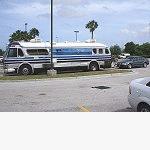 Rating: |
I agree with George. The genset no load voltage should be around 120-121. You need to find a way to check the frequency too because (assuming you have a voltage regulator type set, not self regulated) you can have good voltage but still the frequency can be too high or too low. A photo tach will do if you don't have access to a VOM that has frequency. I have at times used a panel meter but they are voltage sensitive and if your voltage is not 120 they will have error. If your voltage is low, your amps will rise. Frequency on a small set should be about 63hz no load, and 58 or so at full load. Some sets can not maintain those numbers because of poor design or that they need some type of maintenance (fuel system, compression, etc.) But that's the goal. | ||
| Tom Caffrey (Pvcces)
Registered Member Username: Pvcces Post Number: 1334 Registered: 5-2001 Posted From: 65.74.67.67 Rating: |
If it is easier, just find an old electric clock that has a synchronous motor; the number of seconds that it registers in a minute will tell you directly the frequency of the generator! Or, the number of minutes it registers in an hour will tell you the same thing. There is no need to find a frequency meter for this job. For what it's worth. Tom Caffrey | ||
| John Zabrocki (John_z)
Registered Member Username: John_z Post Number: 78 Registered: 9-2006 Posted From: 72.101.22.39 Rating: N/A |
Neat tip Tom, thanks. Gonna remember that one. | ||
| Sean Welsh (Sean)
Registered Member Username: Sean Post Number: 1145 Registered: 1-2003 Posted From: 67.142.130.25  Rating: N/A |
" As this generator is only producing 115 Volts OPEN CIRCUIT"... (and several further statements regarding 115-vac from multiple posters). I believe Jim said he has a Power Tech, and these were available configured for 120vac OR for 115vac. North American supply voltage standard is between 110 and 120, with all of 110, 115, 117, and 120 being commonly found. While 120 is now more common, once upon a time 110 was (and this carries over today in our lingo -- most people refer to phase-to-phase appliances as "220" rather than "240"). Depending on the age of the unit and how it was originally ordered, I have no problem believing the no-load voltage of this generator is actually set at 115. That's not to say it does not have a problem, but I would not immediately jump to that conclusion, either. There is no sense in chasing a possible generator problem first if it is found that the air conditioners behave exactly the same way on grid power. Which is why I keep suggesting doing exactly that as a first step. The Carriers are rated for 110vac, so that should not be a problem. The 1-2 volt drop between the panel and the units is normal for 12-gauge wire at that load with about a 30' run. The 5-6 volt drop is nearly the same with both units running as it is with just a single unit running. This suggests to me that a good deal of that drop may be simply due to ohmic voltage drop between the genny and the units. As it is only a 23-amp generator, the entire supply from genny to transfer switch may well be only 12-gauge. If you had, say, 65' of 12-gauge between the generator and the A/C units, and they were drawing 15 amps apiece, that would be over 5 volts of drop just from the wire alone. So I stand by my original statement that the voltages look "normal" to me (and I used the quote marks deliberately), but that I'd want to see the measurements again when the problem is actually happening. I would not view the 115vac generator output as a problem until I knew for sure the unit was not set/ordered that way, as it was definitely a common option. All that said, it is definitely worth looking into, but Jim can be chasing his tail looking for a generator problem when there may be a different cause for the symptoms. If the generator was set for 115v and can be easily changed to 120, it is certainly worthwhile making that change. Without the Power Tech manual in front of me, I can't give him specifics on how to do this. FWIW, a lot of park power is also 110 volts. So if his roof airs are set up in such a way that they stop working at that voltage, he still has a problem, even if he cranks the generator output up to 120. Right now a proper 30', 50-amp, four-wire shore cord can be had for less than $140: http://www.campingworld.com/shopping/item/extra-heavy-duty-50-amp-6-3-8-1-stw-cord-30-with -handle/48853 (even less if you shop around). At some point, he's going to want one of those anyway. My suggestion would still be to get good power to both legs on the coach and see if that fixes the problem, before implicating the generator itself. If it does, then the next place I'd look is at the wiring from generator to transfer switch, transfer switch to panel, and panel to units. I'd recommend at least 10-gauge and preferably 8 from genny to switch, 6-gauge from switch to panel, and at least 12-gauge from panel to air conditioners. -Sean http://OurOdyssey.BlogSpot.com | ||
| Jim Wilkerson (Wagwar)
Registered Member Username: Wagwar Post Number: 97 Registered: 12-2009 Posted From: 99.109.187.242 Rating: N/A |
I want to Thank! all of you for your careful and reasoned suggestions. I greatly appreciate all of your help. I will confirm wiring type and run lengths tonight. I know that the wiring from transfer switch to house panel is #6 stranded copper cable. The runs from the house panels to A/C units is 12 AWG solid 3 conductor cable (not sure I'm using the right terminology). I'll also contact PowerTech - they might know if this one is set for 115 or 120. The PO did not deliver the manual for this genset and PowerTech does not have anything available - apparently long out of stock and no longer archived. I will also ask if it is possible to set it for 120v. Thanks for the link to the shore cord. Regards, | ||
| Wayne Schell (Rusty_eagle)
Registered Member Username: Rusty_eagle Post Number: 19 Registered: 4-2008 Posted From: 71.218.31.94 Rating: N/A |
The control boards on the AIR V are very sensitive and have been known to go bad. I have replaced two of mine. The bad news is they no longer make the board of the ducted unit. Good Luck Wayne | ||
| Wayne Schell (Rusty_eagle)
Registered Member Username: Rusty_eagle Post Number: 20 Registered: 4-2008 Posted From: 71.218.31.94 Rating: N/A |
The reason I replaced mine is they were doing very similar to what yours is doing. Sorry about the two posts. Wayne | ||
| Jim Wilkerson (Wagwar)
Registered Member Username: Wagwar Post Number: 98 Registered: 12-2009 Posted From: 99.109.187.242 Rating: N/A |
Latest Update: Too much of a good thing? Per Tech Support at Power Tech, I swapped the 45MF capacitor in the genset for a 50MF. The genset is now producing 130vac at it's breaker and 118VAC at the House Panel w/ both A/C units running. The temps here came up a little this week and last night I ran both a/c units for several hours with the new capacitor and they both blew nice and cold. I also successfully wired my remote start with indicator light for the genset so I can start it from inside the bus! NICE! Next, I want to connect my Trace SW4024 to autostart my genset. Would anyone like to offer suggestions on that? Thanks again to Sean and all of you who responded. This is such an awesome resource! | ||
| Sean Welsh (Sean)
Registered Member Username: Sean Post Number: 1150 Registered: 1-2003 Posted From: 72.171.0.146  Rating: N/A |
The SW4024 autostart is very straightforward. You need to use AC2 as the input for this to work. There are instructions for connecting both types of generator start controls in the Trace manual; I don't know which type your unit has. If you have the three-wire type, you'll need to set the crank time properly. Give me a shout if you have specific questions. -Sean http://OurOdyssey.BlogSpot.com | ||
| Jim Wilkerson (Wagwar)
Registered Member Username: Wagwar Post Number: 99 Registered: 12-2009 Posted From: 70.240.147.117 Rating: N/A |
Sean, Should I be concerned about the 130VAC at the genset breaker? I haven't measured it at the house panel w/o load, but it is probably above 120VAC. My gen is 3 wire type. I know that input to the inverter is on AC1. Since I have the auto transfer switch, nothing is input to the inverter on AC2. Should I simply switch input to AC2? Thanks in advance. | ||
| Sean Welsh (Sean)
Registered Member Username: Sean Post Number: 1151 Registered: 1-2003 Posted From: 72.171.0.146  Rating: N/A |
Jim, The autostart will not work on AC1. The Trace will never "see" the genny running and will keep trying to start it. Change to AC2. The Trace has an upper voltage limit of, IIRC, 132 or so. As long as you are below that you will be fine, but you will need to set the Max input volts parameter. Some generators are all over the map with no load, and this is easily fixed by connecting a lamp, fan, or other small load directly to the output before it gets to the inverter. Ours has a 120vac cooling fan, which takes care of this. Once you get it all together, I'd tweak the genny (if possible) down to 125-vac no-load at the inverter input. Since your ATS is between the genny and the Trace. the latter will not be able to detect that it has started and stop cranking. So you will need to take your best guess at crank time and set that as the max crank period. Also, whatever delay you have on the ATS needs to be carried over to the delay timer on the Trace, so that it waits long enough to see the genny come hot. Let me know if any of that is not clear. -Sean http://OurOdyssey.BlogSpot.com | ||
| steve wardwell (Steve_wardwell)
Registered Member Username: Steve_wardwell Post Number: 75 Registered: 2-2010 Posted From: 75.202.68.21  Rating: N/A |
I think my gen might be a little high in the hertz department ( engine speed )..We gain 3-4 Min's every hour with our on-board clocks when on gen power under load. Its darn hard to get the clocks to run right on time when the loads varying all the time. Would you think this is close enough?.....thanks.........s......... | ||
| Jim Wilkerson (Wagwar)
Registered Member Username: Wagwar Post Number: 100 Registered: 12-2009 Posted From: 99.109.187.242 Rating: N/A |
Thanks again to all who responded. I have all of the relays and wiring installed to run my rear A/C unit from the inverter while the engine is running and the rear a/c unit still works! The first rule is to do no harm... Now to fully implement this I need to find a 24V A/C blower circuit from the old bus a/c system. I've examined the manual and wiring diagrams (there are several different wiring diagrams depending on bus model) and as it turns out, there were several a/c blower circuits (driver, lavatory, etc.). I'm hoping someone can point me in the right direction to find this circuit: Should I be looking for a post in the front or rear junction box - or should I be looking for a wire in the old A/C blower location? If the latter, where was the old a/c blower? Thanks for any suggestions. | ||
| Jim Wilkerson (Wagwar)
Registered Member Username: Wagwar Post Number: 101 Registered: 12-2009 Posted From: 99.109.187.242 Rating: N/A |
I guess it might help to tell you what I have: 1981 MCI MC9 conversion. All of the OEM A/C system has been removed. | ||
| Sean Welsh (Sean)
Registered Member Username: Sean Post Number: 1160 Registered: 1-2003 Posted From: 67.142.130.29  Rating: N/A |
Jim, I don't have an MCI, so I can't say from experience. But you could go here: http://www.buses101.com/mc9_maint_manual.htm and download Section 7 -- the schematics might be in there. -Sean http://OurOdyssey.BlogSpot.com | ||
| Jim Wilkerson (Wagwar)
Registered Member Username: Wagwar Post Number: 116 Registered: 12-2009 Posted From: 99.109.187.242 Rating: N/A |
Sean wrote: "The autostart will not work on AC1. The Trace will never "see" the genny running and will keep trying to start it. Change to AC2. The Trace has an upper voltage limit of, IIRC, 132 or so. As long as you are below that you will be fine, but you will need to set the Max input volts parameter. Some generators are all over the map with no load, and this is easily fixed by connecting a lamp, fan, or other small load directly to the output before it gets to the inverter. Ours has a 120vac cooling fan, which takes care of this." Sean, can you be specific as to make, model of cooling fan you're using? Thanks in advance. | ||
| Sean Welsh (Sean)
Registered Member Username: Sean Post Number: 1184 Registered: 1-2003 Posted From: 72.171.0.141  Rating: N/A |
Jim, Sorry, getting that fan was one of the details I left to the gang at Infinity. I know it is a "Dayton," which means it's from Gtainger (Dayton is their house brand), and it is a squirrel-cage blower with three or four speeds. We've got only the highest speed wired in. -Sean http://OurOdyssey.BlogSpot.com | ||
| Jim Wilkerson (Wagwar)
Registered Member Username: Wagwar Post Number: 118 Registered: 12-2009 Posted From: 99.109.187.242 Rating: N/A |
Sean, Thanks. What are you using the fan for? As I recall, you have your inverter inside the bus behind the drivers compartment. I'm thinking of a small axial fan (120Vac) to place in the bay with my inverter, transfer switch. Would it be acceptable to mount this on the inverter for supplemental cooling? If so, where would you recommend placing it? Thank you! | ||
| Sean Welsh (Sean)
Registered Member Username: Sean Post Number: 1186 Registered: 1-2003 Posted From: 67.142.130.23  Rating: N/A |
Jim, the fan I mentioned is actually a large squirrel-cage blower that cools the genny itself. We removed the crank-driven fan and remote-mounted the radiator, and this blower is what supplies the radiator with cool air. There is also a smaller squirrel-cage that pressurizes the enclosure to keep the generator head cool and ensure the Kubota has plenty of breathing air. All of this makes for a very quiet generator. Our SW4024 did have an overheating problem in the relatively confined space above the front wheels. I fixed that with a simple 12-volt fan made for computers, about $5 anyplace such computer parts are sold. I wired the fan to a thermostat mounted near the inverter's exhaust, so it only comes on when the inverter is working hard. The fan is mounted in a 3" cutout in the compartment bulkhead, so it is supplying fresh cool air into the compartment just ahead of the inverter's intakes. Since you also have a 4024, you should know that the air flow in these is from left to right as you are looking at the unit's front panel. So if you are going to use a supplemental fan it should either blow cool air toward the left side of the unit or exhaust hot air from the right side. -Sean http://OurOdyssey.BlogSpot.com |